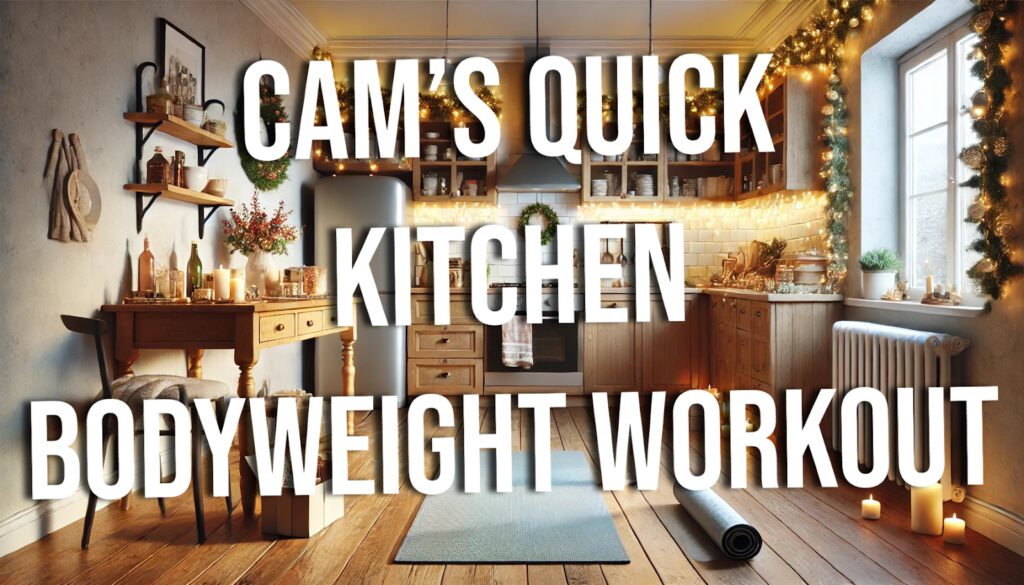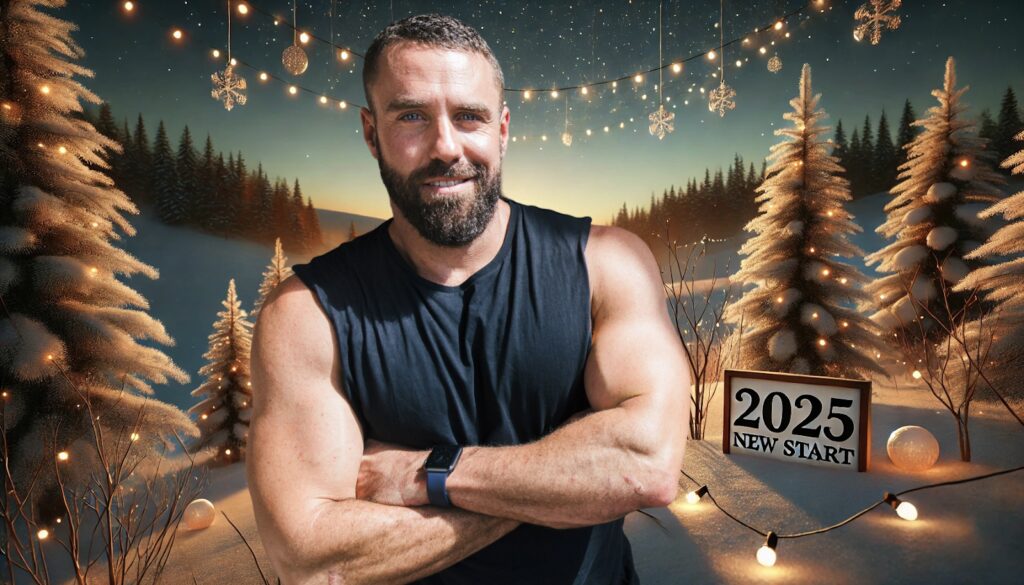As the days get shorter and the temperature drops, many of us let our summer fitness routines fade into the background. With the holiday season fast approaching — often filled with indulgent meals and less time for exercise — it can be challenging to maintain health and fitness goals. According to Cameron Byrnes, one of Australia’s top personal fitness experts and transformation coaches, staying fit post-summer doesn’t have to be an uphill battle.
“Fitness isn’t seasonal,” says Byrnes. “It’s a lifestyle, and with the right approach, anyone can maintain their progress and even thrive during the more challenging months of the year.”
Seasonal Fitness Trends and Why This Matters Now
As the weather cools and outdoor activities wind down, many people face a common dilemma: how to stay active when shorter days and holiday indulgences tempt them to slow down. Research shows that gym attendance typically drops by 15% in the last quarter of the year, highlighting the need for accessible, home-based routines. Byrnes, whose client roster includes celebrities like Mel B, radio personality Jackie O from Kiss FM, and recording artist Samantha Jade, believes this period is a crucial time to build consistent habits that carry you through the holiday season.
Cam Byrnes’ 5 Science-Backed Tips for Staying Fit as the Holidays Approach

1. Prioritize Consistency Over Intensity
One common misconception is that you need to spend hours in the gym or engage in high-intensity workouts to stay fit. According to Byrnes, consistency is more important than intensity. “Even a 20-minute workout a few times a week can yield significant benefits,” he says. Research supports this: Studies show that regular, moderate exercise can improve cardiovascular health, boost energy levels, and enhance mood, even when workout durations are shorter than the recommended weekly amounts. The key is making exercise a sustainable habit.
2. Embrace Strength Training
With colder weather and fewer opportunities for outdoor activities, now is the perfect time to focus on strength training. “Strength training not only keeps your metabolism high, but it also combats the muscle loss that typically occurs as we age,” Byrnes explains. Resistance training helps increase muscle mass, which burns more calories at rest and improves bone density, reducing the risk of osteoporosis. This is especially important during a season when we tend to move less and eat more.
3. Stay Hydrated, Even in Cooler Months
Hydration is often overlooked in the fall and winter when the need for fluids may not seem as pressing as during hot summer days. Byrnes emphasizes that staying hydrated is key to keeping your metabolism functioning optimally and aiding in muscle recovery after workouts. “Dehydration can significantly reduce physical performance, and your body doesn’t signal thirst as strongly in cooler weather,” he explains. Studies have shown that even mild dehydration can impair concentration, physical performance, and energy levels.
4. Plan for Indulgence, But Don’t Overdo It
With holiday parties and festive dinners, it’s easy to fall into the trap of overindulgence. Byrnes recommends planning ahead for these occasions. “Enjoy the holiday treats, but balance them with healthier meals before and after,” he advises. Research shows that mindful eating—paying attention to hunger and fullness cues—can help people avoid overeating while still enjoying their favorite foods.
Byrnes also highlights three key strategies for navigating holiday eating:
Close the Kitchen

Byrnes suggests practicing “fasting at night” to help balance out indulgent meals. “After dinner, close the kitchen for at least 12 hours until breakfast the next morning,” he explains. This simple break from food allows your body to rest and recover, giving your digestion time to reset and helping you avoid late-night snacking.
Calorie Compass
Use your internal “calorie compass” to guide your food choices based on your activity levels. “On less active days, dial back your portions and focus on nutrient-dense, low-calorie foods,” Byrnes advises. This helps prevent unwanted calorie overload when you’re not burning as much energy without needing to restrict yourself too much.
Swap ‘n’ Save
Byrnes encourages smart swaps in holiday cooking to keep meals delicious but healthier. “Replace heavier comfort foods with lighter, nutrient-rich alternatives,” he suggests. For instance, sub in fresh salads or air-popped popcorn for heavier snacks. These small changes allow you to indulge while still maintaining control over your food choices.
5. Don’t Let Shorter Days Diminish Your Motivation
As daylight dwindles, it’s natural to feel less motivated to exercise. Byrnes suggests scheduling workouts at the same time each day and, if possible, doing them in the morning. “Getting your workout done early sets the tone for the rest of the day and ensures that you won’t skip it when your schedule gets busy,” he says. Studies published in the Journal of Physiology suggest that morning exercise can help regulate your circadian rhythm, leading to better sleep and improved energy throughout the day.
Cam’s Quick Kitchen Bodyweight Workout

Byrnes knows that convenience is key, especially during the busy holiday season. He recommends this simple yet effective kitchen bodyweight workout that anyone can do, no matter how hectic their day gets.
1. Countertop Push-ups (Chest, Shoulders, Triceps)
How to do it: Stand facing your kitchen counter, place your hands on the edge, and walk your feet back so your body is at an angle. Lower your chest towards the counter, then push back up.
- Reps: 12–15 reps
- Tip: Keep your body in a straight line, and engage your core for better stability.
2. Chair or Counter Squats (Legs, Glutes, Core)
How to do it: Stand with your feet shoulder-width apart in front of a sturdy chair or near the counter. Lower yourself as if sitting on the chair or reaching for the countertop, then stand back up.
- Reps: 12–15 reps
- Tip: Keep your heels on the ground, and make sure your knees don’t extend beyond your toes as you squat.
3. Stovetop Leg Raises (Abs, Hips)
How to do it: Stand near your stovetop or counter for support. Keeping your body upright, lift one leg straight out in front of you to hip height, then lower it back down. Repeat on the other leg.
- Reps: 12–15 reps per leg
- Tip: This move strengthens your core and improves balance.
4. Dishwasher Plank (Core, Arms)
How to do it: Rest your forearms on the edge of the counter or dishwasher with your feet extended back. Hold your body in a straight line, from head to heels, in a plank position.
- Time: Hold for 20–30 seconds
- Tip: Engage your core and glutes to maintain proper form. Avoid letting your hips sag.
5. Towel Slides (Hamstrings, Glutes)
How to do it: Stand on a tiled or hardwood floor with a small towel under one foot. Keeping your standing leg stable, slide the towel out to the side with your other leg, then slide it back in.
- Reps: 10–12 reps per leg
- Tip: Use slow, controlled movements to engage your leg muscles.
Bonus Move: Kitchen Calf Raises (Calves)
How to do it: Stand with your hands resting on the counter for balance. Slowly lift your heels off the ground, coming onto your toes, then lower back down.
- Reps: 15–20 reps
- Tip: For an extra challenge, try doing this move on one leg at a time.
Routine Structure
Complete 2–3 rounds of these exercises with minimal rest in between. This quick, full-body routine can be done in less than 15 minutes, making it easy to fit into your day — even while you’re in the kitchen.
Why This Kitchen Workout Works
Byrnes emphasizes that consistency is key, and a simple bodyweight routine can be just as effective as more complex gym workouts, especially when you’re pressed for time. “These exercises target multiple muscle groups and get your heart rate up, all within a small space. You can do them while waiting for your coffee to brew or for dinner to cook,” he explains.
Why Cam endorses this workout
No Equipment, No Excuses: “One of the main reasons people skip workouts is they think they need special equipment or a gym. This routine uses just your body weight and everyday items in your kitchen, so there’s no barrier to getting it done.”
Functional Movements: The exercises in this routine mimic natural, functional movements we use every day—like squatting, pushing, and stabilizing. “These movements strengthen your muscles and improve balance and coordination, which are key as we age.”
Time-Efficient: “You don’t need an hour to get the benefits of exercise. This routine can be done in 10–15 minutes, which is ideal for people juggling work, family, and other responsibilities.”
Boosts Metabolism: “By incorporating strength exercises like squats and planks, you’re engaging large muscle groups, which helps increase calorie burn throughout the day.”
Mental Refresh: Byrnes highlights the mental health benefits of squeezing in a workout. “Taking even a short break for physical activity can give you a mental boost, improve your mood, and increase your energy levels.”
Why Cam Byrnes Is the Expert You Should Listen To

Byrnes’ career is a testament to his expertise and dedication to fitness. He began on the front lines of a busy gym before launching his own business, where he now trains everyone from corporate executives to international celebrities. Beyond his success with high-profile clients, Byrnes is passionate about sharing his knowledge with everyday people. His online transformation programs have helped individuals around the world achieve their fitness goals, regardless of age, lifestyle, or limitations.
Most recently, Byrnes has focused on injury recovery and wellness, having personally faced and overcome a significant injury. “My injury reshaped how I think about fitness,” he shares. “It’s not just about looking good—it’s about feeling good and having the resilience to handle whatever life throws at you.”








